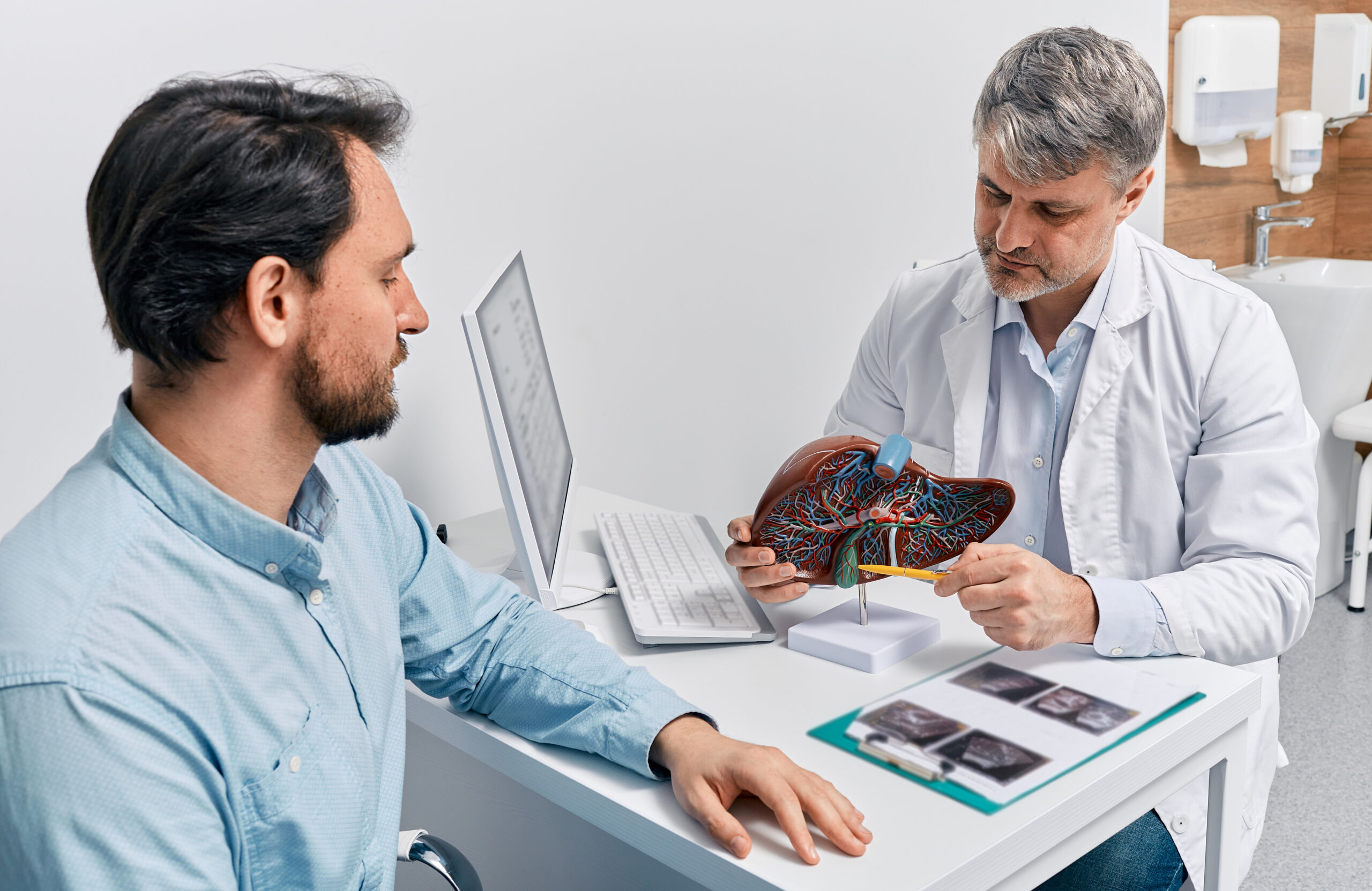Author: Lynda Williams
medwireNews: Two case reports highlight the usefulness of genetic analysis and whole-exome sequencing (WES) for the diagnosis of progressive familial intrahepatic cholestasis (PFIC) in patients with nonspecific clinical features.

The first case report details the diagnosis of PFIC in three patients with “atypical” presentation leading to “diagnostic challenges,” say Jingjing Jiao (Yale School of Medicine, New Haven, Connecticut, USA) and co-authors in the American Journal of Clinical Pathology.
A 37-year-old man with a history of liver disease related to alcohol consumption was initially diagnosed with antimitochondrial antibody-negative primary biliary cholangitis (AMA-negative PBC). He presented with elevated liver enzymes, bilirubin, and γ-glutamyl transferase (GGT) but tested negative for hepatitis B surface antigen, hepatitis C virus antibody, and other markers.
However, liver biopsy showed “marked ductopenia” in the portal tracts with “minimal to absent lymphocytic inflammation,” while immunohistochemistry indicated a “marked chronic cholestatic effect” with biliary metaplasia of the hepatocytes and bile duct loss, the researchers say.
Next-generation sequencing with a cholestasis liver gene panel identified an ABCB4 mutation (c1633C>T), leading to a diagnosis of multidrug resistance protein 3 (MDR3) dysfunction (PFIC3). This mutation was found in the man’s mother, who had also received a diagnosis of AMA-negative PBC.
Jiao et al note that this heterogeneous missense mutation “presents with less severe or even nonprogressive forms of MDR3 dysfunction, as opposed to large deletions, nonsense mutations, or frameshift mutations that are more common in the severe and pediatric forms of the disease.”
They add: “This case suggests that unexplained ductopenia should always raise the possibility of an ABCB4 mutation, even in adults, particularly in cases with high GGT levels.”
The team also reports the case of a Hispanic boy with hepatomegaly from the age of 2 months. Liver biopsy at 8 months showed “moderate portal and bridging fibrosis, moderate hepatocellular damage, and mild to moderate degree of bile duct proliferation with no evidence of cholestasis or bile plugging.”
He underwent cholecystectomy for bile stones at age 10 years and surveillance indicated portal hypertension with splenomegaly, left splenorenal shunt, and esophageal varices. At 17 years old, he presented with pruritus, hyperbilirubinemia, and elevated GGT and serum bile acid, as well as cirrhosis, moderate portal inflammation, and features of chronic cholestasis and ductal proliferation.
WES identified a homozygous splice site mutation in ABCB4 (c2784-12T>C) indicating PFIC3 and the patient is now waiting for liver transplantation, the researchers say.
The third patient, a 2-year-old girl, presented with cholestasis, pruritus, and jaundice after receiving 5 days of treatment with amoxicillin and clavulanate. The patient had elevated total and direct bilirubin, liver enzymes, and serum bile acid but “near-normal” GGT. Liver biopsy “showed paucity of bile ducts with occasional multinucleated giant cells,” the team notes.
After persistently high bilirubin ruled out drug-induced liver injury, her clinicians considered inherited cholestasis, but initial gene panel testing did not identify any mutations in ABCB4, ATP8B1, ABCB11, JAG1, or TJP2.
However, WES identified a heterozygous frameshift mutation at codon 300 (c896_897dupTG) and a heterozygous missense mutation in MYO5B (c1357T>C), leading to a diagnosis of PFIC10.
At 3 years of age, the patient underwent partial internal biliary drainage and end-to-end jejunojejunostomy, after which she was free from symptoms, and with normal bile acids, over 39 months of follow-up.
“In all these cases, the clinical features and the liver histology were nonspecific,” Jiao et al conclude. “These cases not only highlight the wide spectrum of these disorders and challenges in clinical diagnosis but also emphasize the critical role of molecular testing for the diagnosis.”
The second case report, published in the Annals of Medicine & Surgery, describes the management of a girl who initially presented at 16 years of age with abdominal pain and slightly elevated liver enzymes. Two years later, the patient was admitted to hospital with right-sided abdominal pain, jaundice, and fever. Ultrasound showed a “distended” gallbladder with sludge, a dilated common bile duct, and hepatosplenomegaly.
Endoscopic retrograde cholangiopancreatography found a stone in the cystic duct and the patient subsequently underwent laparoscopic cholecystectomy and chronic cholecystitis, adhesions, a normal common bile duct, and nodular liver disease were detected, with advanced fibrosis present on liver biopsy.
Further fibrosis analysis demonstrated thrombocytopenia, hyperammonemia, hyperbilirubinemia, and high levels of liver enzymes, GGT, and alkaline phosphatase, but negative findings for all other assays.
Upper endoscopy ruled out varices secondary to liver disease, but the patient was diagnosed with gastritis and had abdominopelvic ascites and “prominent” portal and splenic veins, report Mohamed Mustafa (University of Aleppo, Syria) and co-authors.
Testing for cholestasis gene alterations identified a novel homozygous ABCB4 mutation (c2870G>T) with “uncertain” clinical significance, although the researchers say that functional analysis modeling indicated that the mutation was likely pathogenic.
The patient was diagnosed provisionally with PFIC3 and treated with ursodeoxycholic acid (UDCA) and vitamins, and complete ongoing remission was achieved with full normalization of liver function.
“While PFIC3 patients with other ABCB4 mutations have varied responses to UDCA, this specific mutation resulted in a complete biochemical remission without the need for liver transplantation,” they write.
“This highlights the clinical importance of identifying new genetic mutations, as they can offer insights into the variability of disease progression and treatment outcomes in PFIC3.”
Mustafa et al conclude: “Our case adds to the growing body of evidence that genotype-specific approaches may enhance patient care and optimize treatment strategies for this rare disease.”
medwireNews is an independent medical news service provided by Springer Healthcare Ltd. © 2025 Springer Healthcare Ltd, part of the Springer Nature Group
Am J Clin Pathol 2025; 163: 332–339
https://academic.oup.com/ajcp/article-abstract/163/3/332/7783291?redirectedFrom=fulltext&login=false
Ann Med Surg 2025; 87: 953–963
https://journals.lww.com/annals-of-medicine-and-surgery/fulltext/2025/02000/novel_abcb4_mutation_in_a_female_patient_with.62.aspx


